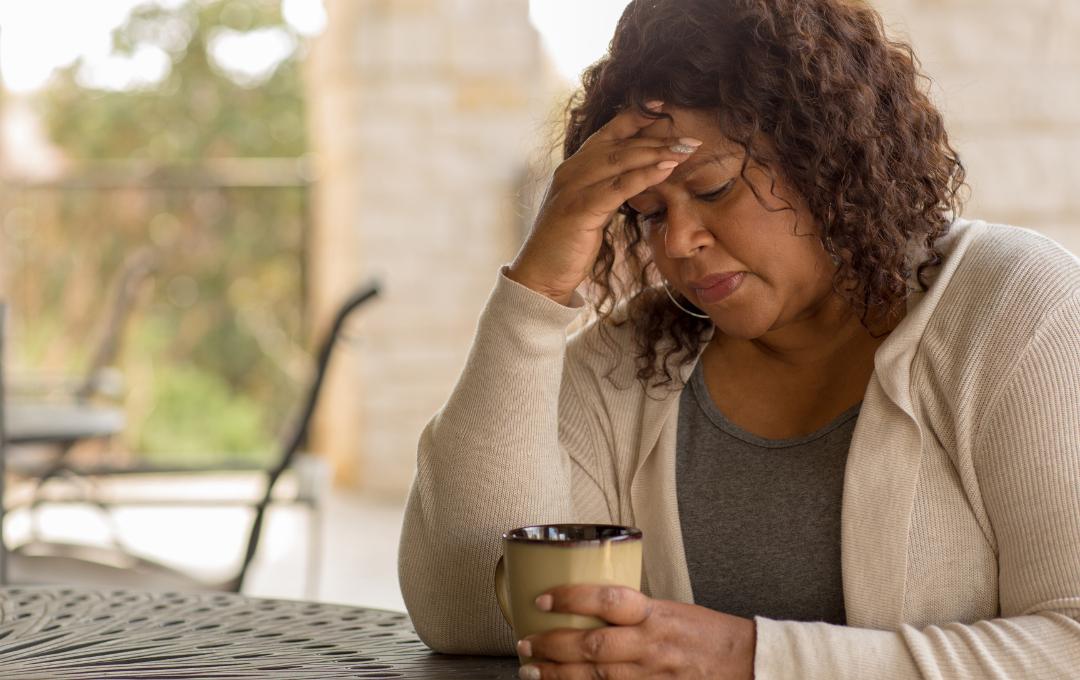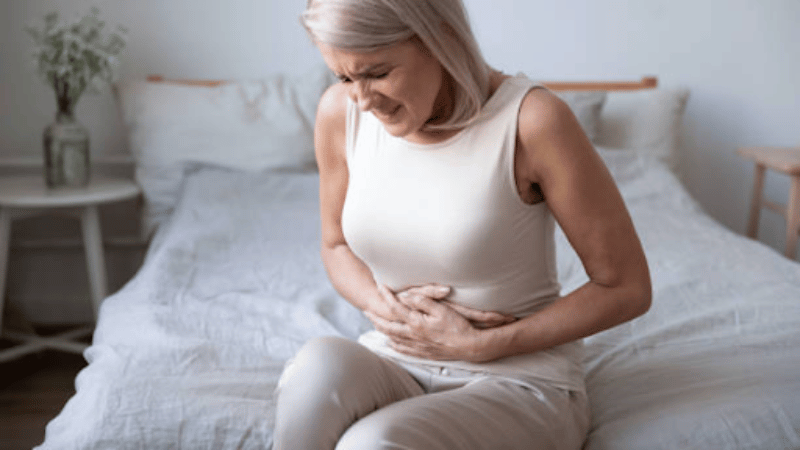
Is it possible to have fibroids after reaching the age 50? Many women worry about whether their fibroids will return or worsen after menopause. Uterine fibroids, which are common non-cancerous growths, often grow when reproductive hormone levels are high, like during pregnancy, and shrink when these hormone levels decrease, such as after menopause.
While there is a lower risk of developing new fibroids after menopause, some women may experience pain and discomfort even after this hormonal change. If you think you’re experiencing menopause and fibroid symptoms at the same time, consult one of our expert fibroid specialists at USA Fibroid Centers for a diagnosis.
Schedule Your Consultation Today
The Connection Between Uterine Fibroids and Menopause

Fibroids and menopause can both cause a variety of symptoms that may seem somewhat similar. Understanding the symptoms of uterine fibroids and menopause gives you a better idea of when you need to consult a fibroid specialist for evaluation and treatment. Here is a breakdown of common symptoms associated with each.
Fibroid symptoms include:
- Heavy menstrual periods
- Anemia from excessive blood loss
- Pelvic pain , back or leg pain
- Abdominal bloating
- Frequent urination or constipation
- Pain during and after intercourse
Pre-menopause (perimenopause) symptoms include:
- Irregular periods that may be longer, shorter, or heavier than in the past
- Hot flashes
- Insomnia
- Fatigue (may be caused by anemia due to heavier than usual blood loss during menstruation)
- Night sweats
- Vaginal dryness
Fibroids During the Stages of Menopause
Understanding the stages of menopause and how it impacts fibroids can give you a better idea of when you need to consult a fibroid specialist for evaluation and treatment.
Perimenopause
Perimenopause is the precursor to menopause, which can begin at different times in a woman’s life. Some may notice symptoms as early as their mid-30s, while other women may be closer to 50 before experiencing symptoms. This stage before menopause is also when fibroid symptoms are likely to peak for women diagnosed with fibroids.¹
During Menopause
It is a common misconception that fibroids will go away during menopause. However, this is only sometimes the case. Recent studies have found that uterine fibroids typically do not resolve on their own without medical intervention. If left untreated, they may continue to cause discomfort or pain, even after menopause.
During menopause, the ovaries produce less estrogen and progesterone. As these hormone levels decrease, fibroids tend to shrink. Menopause begins when menstruation stops completely.
The shrinking of fibroids in the body during menopause is similar to treatments like uterine fibroid embolization (UFE), where the blood flow to the fibroid is cut off to alleviate symptoms.
The Role Hormones Play
While the ovaries are the main source of the body’s estrogen and progesterone, other tissues, such as the adrenal glands, also produce these hormones. Therefore, even after menopause, small amounts of estrogen and progesterone may remain and continue to interact with fibroids.
Consult with a fibroid specialist to discuss appropriate treatment options and manage your condition effectively. Regular health check-ups can help monitor any health changes during the postmenopausal years.
Calcified Fibroids After Menopause
In some cases, fibroids may become calcified after menopause. This happens when the fibroid no longer receives enough blood supply to continue growing, and the edges begin to harden or calcify. While the reduced hormone levels during menopause can contribute to calcification, symptoms may persist or even worsen, sometimes increasing bleeding and discharge.
Do I Have to Get Fibroids Removed?

With new technologies, the surgical removal of fibroids is unnecessary for symptom relief. There is a non-invasive treatment option to help with symptom relief called uterine fibroid embolization (UFE).
“We’ve helped countless women find freedom from painful fibroid symptoms through UFE,” says Dr. Aaron Shiloh, an experienced interventional radiologist at USA Fibroid Centers. “UFE preserves the uterus and allows for a much faster recovery compared to hysterectomy, with no interference in hormone levels.”
Hormone Replacement Therapy and Menopause
Many women approaching menopause consider hormone replacement therapy (HRT) to manage menopausal symptoms. However, for those with fibroids, it’s important to be aware of the risks, as HRT often includes estrogen, which can fuel fibroid development.
Discussing all options with a fibroid specialist is crucial in determining the safest and most effective treatment for your long-term health.
Hysterectomy and Menopause
A hysterectomy, the surgical removal of the uterus, is a permanent solution for removing fibroids but can induce early menopause if the ovaries are also removed. While this procedure can eliminate fibroids, it is an invasive surgery that comes with significant, long-term consequences, including the onset of menopause symptoms such as hot flashes.
Hysterectomy is usually reserved for cases where other treatments have failed or in situations of severe complications.
UFE and Menopause
For most women, uterine fibroid embolization (UFE) offers an effective, non-surgical solution for fibroid relief. UFE is a minimally invasive outpatient procedure that shrinks fibroids by blocking their blood supply without the need for major surgery or hormone therapy.
Since UFE typically has minimal impact on hormone production, it may help avoid the complications associated with hormone therapies and the permanent consequences of hysterectomy. This makes it an ideal choice for women looking to manage fibroid symptoms effectively while preserving their fertility and avoiding surgery.
Visit USA Fibroid Centers for Help
At USA Fibroid Centers, we offer uterine fibroid embolization for women with fibroids during menopause and those suffering from fibroids after menopause. Our fibroid specialists can answer your questions and concerns about fibroid treatment and menopause.
Schedule online or call us at 855.615.2555 to plan a visit to one of our nationwide fibroid centers.
FAQs About Fibroids and Menopause
Can You Have Fibroids After Menopause?
While it is rare for uterine fibroids to continue growing after menopause, it can happen in certain circumstances. Other bodily tissues, such as fat tissue, can produce estrogen even when ovarian function has ceased.²
If a woman continues to experience symptoms linked to fibroids after menopause, consulting a medical professional could help detect underlying medical conditions other than fibroids.
Does Menopause Shrink Fibroids?
While it’s common for fibroids to shrink after menopause due to the decreasing hormone levels, they don’t always disappear completely. While hormone levels affect fibroid growth, there are other possibilities for fibroids to continue growing.
How Does Menopause Change Fibroid Symptoms?
After menopause, fibroids cause similar symptoms to pre-menopausal fibroids. Since women don’t have periods after menopause, they don’t experience the intense menstrual cycles associated with fibroids. However, they can experience intermittent bleeding, cramps, a protruding belly, and frequent urination.
If you have post-menopausal fibroids, you could also have symptoms like:
- Inability to empty the bladder fully
- Pain during intercourse
- Fatigue
- Swelling and fullness in the abdomen
- Lower back or leg pain
If you notice these symptoms, you could have uterine fibroids, but only a medical professional can provide a diagnosis and treatment.
Request a Consultation With a Fibroid Specialist
Do Fibroids Go Away After Menopause?
If you already have fibroids and you’re approaching the stages of perimenopause, you’re probably wondering if you can delay treatment and let them resolve on their own. Although fibroids are not cancerous, they can cause serious complications if left untreated. In some cases, these complications can impact the uterus long-term, causing unpleasant symptoms of fibroids after menopause.
At this point, more research is needed to understand the effects of fibroids during menopause.
Can Fibroids Cause Bleeding After Menopause?
You can experience bleeding even after menopause if you have fibroids. This symptom is most common in women taking hormone replacement therapy (HRT) because the added hormones allow the fibroid to continue to grow. However, postmenopausal bleeding can also be a symptom of other medical conditions, so you should consult a doctor about any postmenopausal bleeding.
Do I Need a Different Treatment for Fibroids Postmenopause?
Many of the treatments for fibroids after menopause are the same ones used for premenopausal women. If you have post-menopausal fibroids, you can still choose a minimally invasive treatment like UFE to shrink your fibroids without surgery.
Sources
- Mara Ulin et al., “Uterine fibroids in menopause and perimenopause,” Menopause, https://www.ncbi.nlm.nih.gov/pmc/articles/PMC6994343/
- ER Simpson, “Sources of Estrogen and Their Importance,” The Journal of Steroid Biochemistry and Molecular Biology, https://pubmed.ncbi.nlm.nih.gov/14623515/



